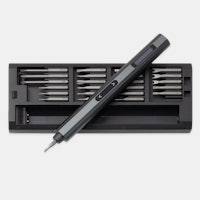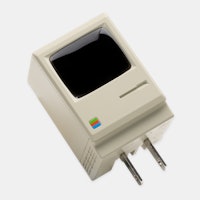Click to view our Accessibility Statement or contact us with accessibility-related questions




i want your help please MX500 2tB and samsung EVo 2TB which to buy but i dont know so which to buy MX500 2TB or 860 EVO 2tB?

search
close
Sort by: Newest
keyboard_arrow_downjim2
1
Mar 16, 2019
Which from these 2 is better to buy? which is faster ,, better in quality and etc?
https://www.crucial.com/usa/en/h81m-c/CT11338050
https://www.samsung.com/us/computing/memory-storage/solid-state-drives/ssd-860-evo-2-5--sata-iii-2tb-mz-76e2t0b-am/
https://www.samsung.com/us/computing/memory-storage/solid-state-drives/ssd-860-evo-2-5--sata-iii-2tb-mz-76e2t0b-am/
PRODUCTS YOU MAY LIKE
Trending Posts in More Community Picks

Graham88
Completely surprised by the lack of blade diversity here on Drop...
I’ve been a collector of Blades since before my teens, and a retailer coming up on 15… or maybe 20 years. Drop has really been kind of an interesting experience for me, because I do occasionally get to see some unusual tech and sometimes EDC items that otherwise I might not have been aware of. And maybe it’s because I have a deep love of cutlery and bladed weapons, but I find myself trolling through the site looking at it what’s available; and it’s just it’s pretty much the same. And the bladed community here is just always confused me.. every single knife is about the same, they’re almost all drop points and although the handle materials change and brands change.. it’s really just the same knife over and over and over again... occasionally you’ll see a tanto or a slight variant; but rarely… and almost never a serrated blade. And I’m just deeply amazed at this diversion of serrated blades. And I’m just surprised there isn’t more of a request for diversity here.... and I...
Mar 12, 2020
JellyDPhoto
Can we get Sony E-Mount or other mirrorless camera options please..
Would be nice to see some Sony E mount full frame cameras on here. I currently shoot with a A99 and they killed the lense path for better or more option lenses and now is all E-Mount. 🤔
Jan 13, 2020
RayF
There Are Pandas, and Then There Are Pandas.
And this isn't either of them! The Pandas we're talking about here, are watches, not bears. And what got me thinking about them (again) was a link posted this morning by @cm.rook who pointed a few of us to the very attractive (and not terribly priced) Yema "Rallygraph" Panda which, in it's most traditional arrangement, looks like the one on the left, but can also be had in the version on the right: The model on the left is a true Panda, while the model on the right is called a reverse Panda. The reason for that distinction is clear--Panda bears, only come in the first arrangement. Now at this point, everyone should be thinking about the most well-know Panda, The Rolex Panda, which is actually a Daytona, and among Rolex Daytonas, the most famous of which is the Paul Newman Daytona, which was famous first, because it was Paul's, and second because it sold at auction for $17.8 million (US Dollars). The story of that auction is well-known so I'll only...
Nov 8, 2019





So explaining it in simpler words.
There's different kinds of flash memory chips, based on different technologies: SLC , MLC, TLC, QLC
SLC on the left is the most expensive to manufacture, but has high performance and high endurance.
The more you go to the right, the cheaper the chips are to manufacture (because they can pack more bits in the same area) but the downside is you lose a bit of performance and endurance.
The 860 EVO uses TLC and has an endurance of 1200 TB - that means that you can write data on it as much as you want, but after the 1200 TB of data written to the drive (in real world probably a few tens to hundreds of TB after that threshold, these numbers are conservative), some memory cells may become unable to store new information, they become read only ... so from that point gradually you will no longer be able to store new data on the drive.
The 860 QVO uses QLC memory - it's cheaper to make and packs more bits but tradeoff is lower endurance - the 2 TB drive can only handle 720 TB instead of 1200 TB.
QLC is also slower when it comes to writing data to it, so Samsung resorts to some tricks in order to improve speed. As long as there's empty space on the SSD, it configures a part of the memory chips in SLC mode, which allows it to quickly write incoming data into those portions of the memory chips and when the drive is idle, it slowly moves the data from those SLC portions to the more permanent locations, emptying those area and making them available for new incoming data.
In the case of the 2 TB model, this SLC portion is adjusted dynamically between 6 GB (when drive is nearly 100% full), up to 78 GB when there's plenty of free space.
So for example, let's say you install a huge game, like let's say Fallout 4 with Ultra HD textures, basically a 90 GB game. The SSD will start writing these GB of data as they come in using those 78 GB of SLC mode memory at very high speeds, let's say up to 520 MB/s ... and once 78 GB (or whatever quantity was in SLC mode at that point) is reached, the drive will be forced to start writing in the memory cells configured in QLC mode, so the 12 GB remaining will be written at slower speeds, around 160 MB/s.
Once the installer completes writing those 90 GB, the drive will work in background and slowly transfer those 78 GB into the QLC memory, at 100-160 MB/s so let's say those 78 GB will be transferred to QLC over the next 78000 MB / 100 MB/s = 780 seconds or 10-15 minutes.
As soon as portions of that 78 GB of SLC memory are available, the drive can start reusing them for caching writes.
From the operating system's point of view, everything is transparent.
The read speeds are not affected, QLC is just as fast as TLC, the limitation is the SATA protocol which limits the transfer speeds to around 500 MB/s.
So EVO is better, has higher endurance, but if you're just gonna use the SSD for storing games (so you write very little, you write the game once and then launch it multiple times) then QLC would be OK.
You don't want to use QLC as a drive where you write a lot, like daily file downloads, rendering videos on it, capturing video games to ssd etc etc because you'll burn through those 700 TB of life fast.
Well, you can simply do the math.
Assuming a game has 25 GB size on average, if you install 40 games each week, you'll write 40 x 25 GB = 1000 GB (~1 TB) each week.
Therefore, you'll eat through those 1200 TB in 1200 weeks, or 23 years (assuming 52 weeks in a year).
You're only writing a game once, so you only write 25 GB once, or whatever the amount of data the game uses. Reading data from the memory chips is free, it doesn't wear out the memory cells.
Note that these calculations are only valid if there's plenty of empty space on the drive. The more full the drive is, the more that 1200 TB number will be less accurate. For example, if you fill 1.8 TB of those 2 TB with stuff and then you keep installing games and uninstalling games in those 200 GB remaining, the endurance may drop to 1000 TB over the drive's life.
The SSD is smart enough to constantly move around data inside the memory cells and write new data in cells that are less "abused", and it tries to keep the "wear and tear" level on each memory chip at around the same percentage with all the others.... for example, for TLC memory, in general the memory cells can be erased up to 200-400 times, and then they become unusable, so the controller keeps track of how much each memory chip and each portion of the memory chips is used, and picks less used memory areas to put new data into.
But, under certain conditions like when there's little room available, it's forced to choose less optimal locations for new data, because it would otherwise simply take too much time to calculate where to put the data, and the speed would decrease.
Crucial MX 500 uses a different kind of TLC memory (Samsung manufactures their own memory chips, Crucial uses TLC memory made by Micron) which is slightly lower quality than the memory used by Samsung for their drives.
Also, the Crucial uses a cheaper controller ( Silicon Motion SM2258) which isn't as smart as the Samsung controller, so it's not as good at writing the data in optimum places, in order to improve the life of the drive.
Therefore, Crucial only guarantees 700 TB of life for their 2 TB models.
ALL drives can be used for daily file downloads, rendering videos on them, anything... I'm just saying you have to be aware of these "lifetime writes" numbers.
When you're rendering or capturing videos from games, you're often writing large amounts of data, for example I often capture 1 TB worth of data in a few hours of gameplay, because I like to capture in a lossless format and then compress it at the highest quality. In such scenario, where I capture 1 TB of data every day, the drive would wear out in less than 2 years, much less than the 5 year warranty of the drive.
If you want very long endurance, a drive to last you a long time, you should look for a drive that uses MLC memory. However, these are quite rare these days and expensive.
For example, Samsung 860 2 TB PRO uses MLC and has a 2400 TB endurance value (twice as much as the TLC version) but costs 500$: https://www.amazon.com/Samsung-Inch-SATA-Internal-MZ-76P2T0BW/dp/B07879KC15/
Or, Adata SU900 uses MLC memory and has a lifetime writes of 1600 TB : https://www.amazon.com/ADATA-Ultimate-SU900-SU900SS-Internal/dp/B07473GKD1/
My opinion is pretty much this: even if you write 1 TB each day to the drive, with that 2 TB drive you'll still wear it out in more than 3 years... 2-3 years from now, you'll probably be able to buy a 4-6 TB SSD for the equivalent of today's 100-200$, so you really won't care about it.
It's like being sorry today that a 250-500 GB mechanical drive you bought 3-5 years ago is about to die on you. 500 GB is so low you won't care, and you won't mind buying a replacement drive, it has served you well for 3-5 years.
I'd go with the 860 EVO because it would have a more consistent performance and it's a proven drive, used by loads of people... QLC is still relatively new, and I wouldn't be comfortable with the performance quirks.
so which to buy MX500 2TB or 860 EVO 2tB?